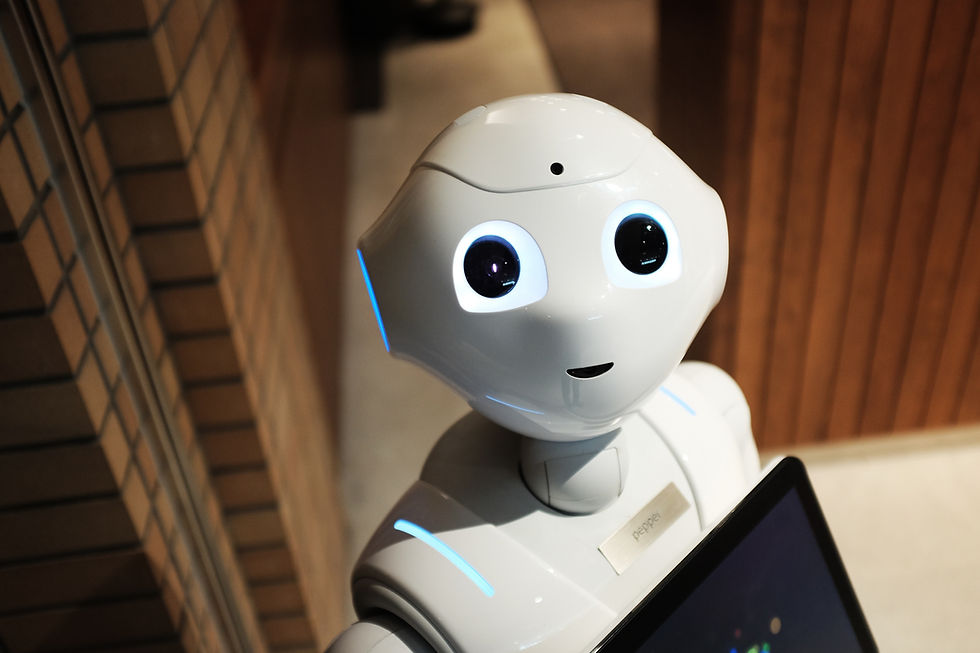How AI is Revolutionizing Assistive Technology for Individuals with Disabilities
- jordan teegardin

- May 9, 2024
- 3 min read

Artificial Intelligence (AI) is making significant strides in assistive technology, providing new opportunities for individuals with disabilities to lead more independent and fulfilling lives. Here, we explore some of the groundbreaking ways AI is enhancing accessibility and discuss how we can continue to push the boundaries of what's possible.
Navigating with AI: Smart Glasses for Visual Impairments
AI-powered assistive devices are transforming how people with visual impairments interact with their surroundings. Smart glasses and similar devices use machine learning algorithms and computer vision to identify objects and provide real-time audio feedback. This technology empowers individuals to navigate independently, boosting their mobility and sense of autonomy. Imagine being able to walk through a busy city street, confidently identifying obstacles, and finding your way with ease.
Robotic Prosthetics: Enhancing Mobility with AI
For individuals with mobility impairments, AI is revolutionizing prosthetics. Advanced prosthetic limbs equipped with sensors and machine learning algorithms can interpret signals from the user's muscles and nerves, enabling more natural movement and precise control. This technology allows users to perform tasks previously thought impossible, such as playing sports or engaging in complex physical activities, thereby enhancing their quality of life and expanding their horizons.
Virtual Assistants: Aiding Daily Tasks and Communication
Virtual assistants powered by AI can significantly benefit individuals with cognitive or communication impairments. These assistants help with everyday tasks like scheduling appointments, making phone calls, and sending messages. Their ability to understand natural language makes them accessible to individuals with speech impairments, providing a seamless way to communicate and manage daily responsibilities.
AI in Public Spaces: Improving Accessibility
AI also plays a crucial role in making public spaces more accessible. For example, computer vision algorithms can detect when a wheelchair user is waiting to cross the street and adjust traffic lights accordingly. Machine learning algorithms enhance speech recognition systems, making it easier for individuals with speech impairments to communicate effectively. These advancements ensure that public spaces are inclusive and accommodating for everyone.
The Adaptive Nature of AI
One of AI's most significant benefits is its ability to learn and adapt. As AI technology evolves, it becomes increasingly capable of addressing the diverse and unique needs of individuals with disabilities. This adaptability not only improves functionality but also helps reduce the stigma associated with disabilities by promoting inclusivity and accessibility.
A Balanced Approach: AI and Human Support
While AI has tremendous potential to enhance the lives of individuals with disabilities, it is essential to recognize that it is not a one-size-fits-all solution. AI should complement human interaction and support, not replace it. Human empathy and understanding remain irreplaceable, and AI should be used as a tool to enhance accessibility and inclusion.
Join the Conversation
We would love to hear your thoughts and experiences with AI and assistive technology. Have you or someone you know benefited from these advancements? Share your stories, photos, and comments below or on social media with the hashtag #AIAssistiveTech. Let's continue the discussion on how we can leverage AI to create a more inclusive and equitable world for everyone.
Conclusion
AI is poised to revolutionize the field of assistive technology, offering new solutions that empower individuals with disabilities and enhance their quality of life. By developing innovative assistive devices and improving accessibility in public spaces, we can work towards a more inclusive future. As AI technology continues to advance, we look forward to seeing even more breakthroughs that promote inclusivity and empower individuals of all abilities.




Comments